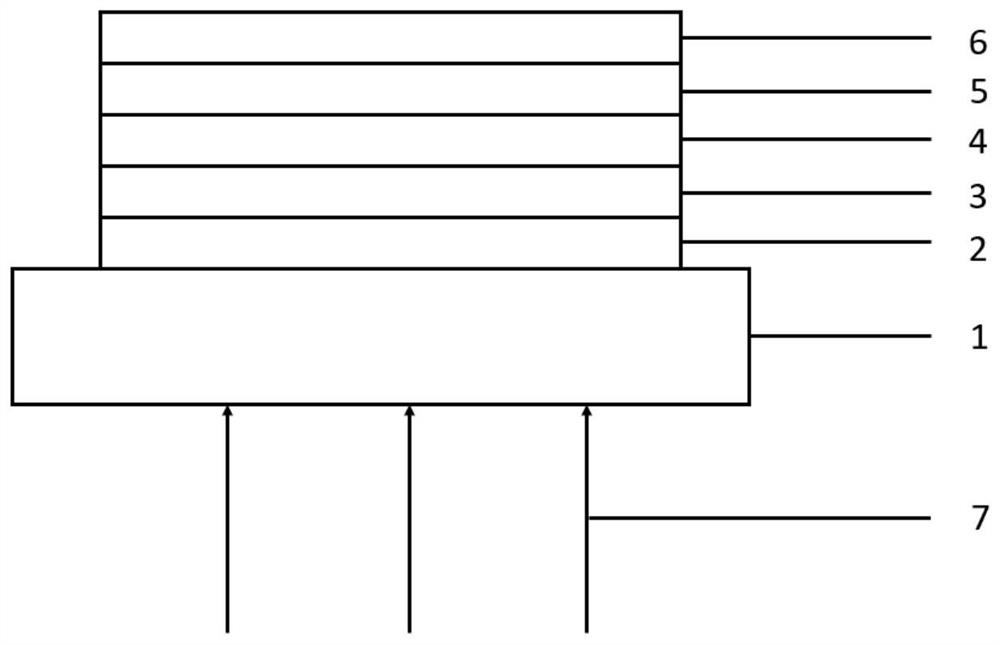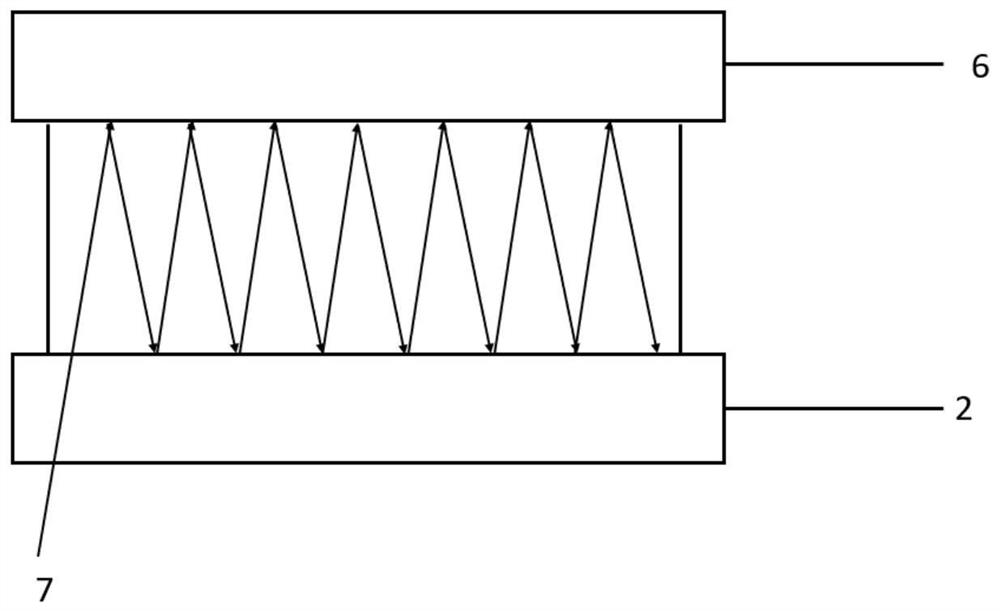Organic photoelectric detector based on optical microcavity effect and preparation method thereof
A photodetector and optical microcavity technology, which is applied in photovoltaic power generation, electrical solid-state devices, semiconductor/solid-state device manufacturing, etc., can solve the problems of low detection rate, difficult separation of long-wavelength excitons, and low external quantum efficiency, achieving The effect of unique structure and good detection ability
- Summary
- Abstract
- Description
- Claims
- Application Information
AI Technical Summary
Problems solved by technology
Method used
Image
Examples
Embodiment 1
[0035] Clean the glass substrate 1: put the glass substrate 1 into detergent, acetone, deionized water, and isopropanol in sequence, ultrasonically clean it for 15 minutes each time, and then dry it with an inert gas. Then the glass substrate 1 is transferred to the vacuum evaporation equipment, and the vacuum degree is less than 3.0×10 -3 A layer of Au electrode was vapor-deposited in Pa environment. Then put the transparent conductive electrode layer 2 into an ozone machine for UV treatment for 10 minutes. The mixture of PEIE and benzothiazocyanine dye was spin-coated on the transparent conductive electrode layer 2 after ozone treatment, the rotation speed was controlled at 4000rpm, the time was 20s, and then annealing was performed, the annealing temperature was controlled at 150°C, and the time was 15min. . Preheat the glass substrate 1 and the organic donor-receptor solution on which the double-narrow-band modulation layer 3 has been spin-coated at 100° C., spin-coat th...
Embodiment 2
[0038] Clean the glass substrate 1: put the glass substrate 1 into detergent, acetone, deionized water, and isopropanol in sequence, ultrasonically clean it for 15 minutes each time, and then dry it with an inert gas. Then the glass substrate 1 is transferred to the vacuum evaporation equipment, and the vacuum degree is less than 3.0×10 -3 A layer of Au electrode was vapor-deposited in Pa environment. Then put the transparent conductive electrode layer 2 into an ozone machine for UV treatment for 10 minutes. The mixture of PEIE and benzothiazocyanine dye was spin-coated on the transparent conductive electrode layer 2 after ozone treatment, the rotation speed was controlled at 4000rpm, the time was 20s, and then annealing was performed, the annealing temperature was controlled at 150°C, and the time was 15min. . Preheat the glass substrate 1 and the organic donor-receptor solution on which the double-narrow-band modulation layer 3 has been spin-coated at 100° C., spin-coat th...
PUM
| Property | Measurement | Unit |
|---|---|---|
| Thickness | aaaaa | aaaaa |
| Thickness | aaaaa | aaaaa |
| Thickness | aaaaa | aaaaa |
Abstract
Description
Claims
Application Information
 Login to View More
Login to View More - Generate Ideas
- Intellectual Property
- Life Sciences
- Materials
- Tech Scout
- Unparalleled Data Quality
- Higher Quality Content
- 60% Fewer Hallucinations
Browse by: Latest US Patents, China's latest patents, Technical Efficacy Thesaurus, Application Domain, Technology Topic, Popular Technical Reports.
© 2025 PatSnap. All rights reserved.Legal|Privacy policy|Modern Slavery Act Transparency Statement|Sitemap|About US| Contact US: help@patsnap.com


